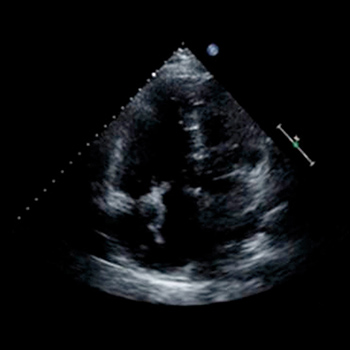Keywords
Embolism, echocardiography, thrombus, thrombolysis
Abstract
A 74-year-old man presented to our Emergency Department with acute dyspnoea. His electrocardiogram showed atrial flutter with 2:1 block and a rate of 150 bpm. Initial investigations revealed a D-dimer level of 6.01 mg/dl. Based on the patient’s complaints and the high D-dimer level, computed tomography pulmonary angiography was immediately performed. This showed no evidence of pulmonary embolism, but there were pneumatic changes in the right upper lung lobe. Antibiotics treatment was started with pipracillin/tazobactam, after which the patient’s condition improved. However, on the third day after admission he developed acute dyspnoea, diaphoresis and cardiopulmonary instability immediately after defecation. To promptly confirm our clinical suspicion of pulmonary embolism, a transthoracic echocardiography was carried out. This demonstrated a worm-like, mobile mass in the right heart. The right ventricle was enlarged, and paradoxical septal motion was present, indicating right ventricular pressure overload. The systolic tricuspid valvular gradient was 56 mmHg. The patient was treated with thrombolysis. His condition was greatly clinically improved after 3 hours. After 10 days of hospitalization, the patient was discharged.
References

Views: 930
HTML downloads: 358
PDF downloads: 340
Echo downloads: 0
The case with learning points downloads: 0
Final revision downloads: 0
Published:
2014-11-11
Issue:
Vol. 1 (2014)
(view)










